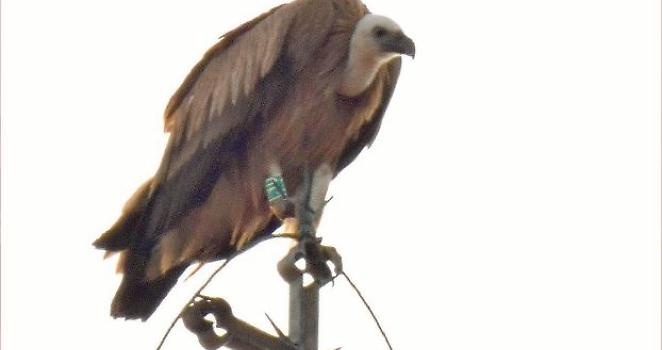
Douro – an Egyptian vulture captured and tagged at the Escalhão supplementary feeding site last June in the framework of the project LIFE Rupis, and that has spent the winter in the border between Mali and Mauritania – has now started his migration towards Europe!
Douro started moving northwards on the 24th of January, and he is not following the same route as when he flew southwards. Last year, Rupis, the only bird already tagged in 2016, started his journey north much later. This might be because Rupis was still not fully adult and did not breed in 2017. Douro, on the other hand, was captured as a breeding bird – he attempted to breed last spring in the Douro canyons, but unfortunately the pair was not able to raise an offspring.
5 adult or sub-adult Egyptian vultures from the Douro area are equipped with a GPS tag, and have been providing the LIFE RUPIS with valuable information about their detailed movement. All the five birds made it to their wintering grounds – see here>>. Unfortunately, three birds (Rupis, Poiares and Bruçó) did not send data in the last weeks – however as GSM coverage is bad in parts of the wintering grounds, it might be that once they start migrating North, we will receive new data. We keep our fingers crossed that they will arrive safe back in the breeding grounds in Europe.
You can follow the movements of all these birds at our website here.
The LIFE RUPIS project aims to implement actions to strengthen the populations of the Egyptian vulture (and the Bonelli´s eagle) at the trans-border Douro, by reducing the mortality of these birds and increasing their breeding success. The Egyptian vulture is the smallest vulture in Europe, and it is classified as “Endangered” – in Europe its populations have declined by 50% over the last 40 years.
The project includes equipping electric lines against electrocution, several actions that aim to minimize the threat of illegal poisoning, targeted management of over 1,000 hectares of important habitats for the species and also the creation of a network of supplementary feeding stations.
The project is implemented by the VCF and partners, including SPEA (BirdLife in Portugal), ATN and Palombar (regional conservation organisations in NE Portugal), the Junta de Castilla y Leon & the Fundación Patrimonio Natural de Castilla Y León, the Portuguese electricity distributor EDP-D, the Portuguese statutory conservation agency ICNF and the Portuguese environmental police force (GNR), and is co-funded by the MAVA Foundation.







